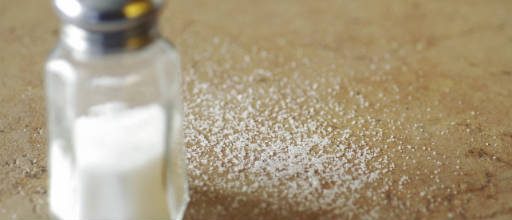
Study finds way to cut salt consumption
Researchers have found a promising new way to help Australians reduce the amount of salt they eat.
The community-based programme, developed for Lithgow by researchers from The George Institute for Global Health (TGI), reduced average daily salt consumption by two thirds of a gram.
TGI Food Policy Division leader Professor Bruce Neal said: “This may not sound like a big reduction in salt intake, but if applied across Australia would result in several thousand fewer heart attacks and strokes each year.”
More than 100,000 heart attacks and strokes occur each year in Australia and about 45,000 lead to death. Sodium is the part of salt (sodium chloride) that causes high blood pressure and increases the risk of cardiovascular disease.
The findings were revealed today at the 26th annual meeting of the High Blood Pressure Research Council of Australia in Adelaide.
“Drop the Salt Lithgow” used a community based approach to educating the community about the harms of salt and helping people to make a change. The team knocked on the doors of 500 people, manned booths in the malls, held meetings with large employers and encouraged people to use a salt substitute.
Mean salt consumption in Lithgow fell from about 8.8g/day to about 8.1gday. Intake levels were improved but remained well above the World Health Organisation’s recommended maximum of 5g/day and more than double the Australian National Health and Medical Research Council’s suggested dietary target of 4g/day.
The sodium-reduced potassium-enriched salt substitute provided a focal point for discussions with the community.
“Salt for Life is a blend of sea salt and potassium salt that provides 70% less sodium than regular salt,” said Jason Cummings of Nu-Tek Salt. “The great thing is that there’s no compromise on taste which makes it easy for people to make the switch.” Nu-Tek Salt was provided to bakeries and cafes for food preparation, and Salt for Life made available through doctors’ surgeries.
After the intervention Lithgow residents were more knowledgeable about salt levels and more people reported trying to control their salt intake. “Using herbs and spices to season food and avoiding eating out were some of the strategies reported by the people taking part in the study. Nationwide reductions in the salt levels of some processed foods may also have contributed,” said Professor Neal.
Project lead, Mary-Anne Land has since moved to WHO in Geneva but noted the central role that the Mayor, local government, community groups and health workers played in getting the message out.
Lithgow Mayor Maree Statham said: “The health of the community is hugely important to me, so I saw this as a great opportunity for the people of Lithgow. The challenge for us now is to keep salt intake down.”
Five tips for cutting down on salt:
- Use herbs and spices instead of salt
- Prepare your own food – that way, you control what goes into it
- Remove the salt shaker from on the table
- Use a low-sodium salt substitute
- Read labels on processed food and look for the lowest sodium value. A food with less than 120mg of sodium per 100g is a low salt food. More than 500mg/100g is high.


